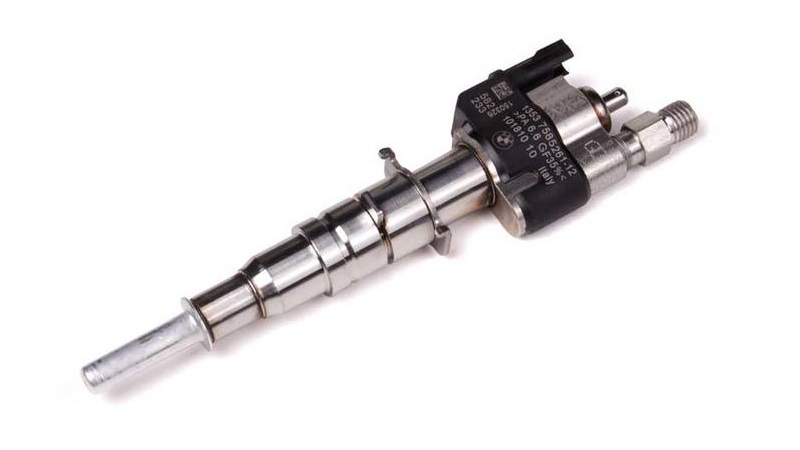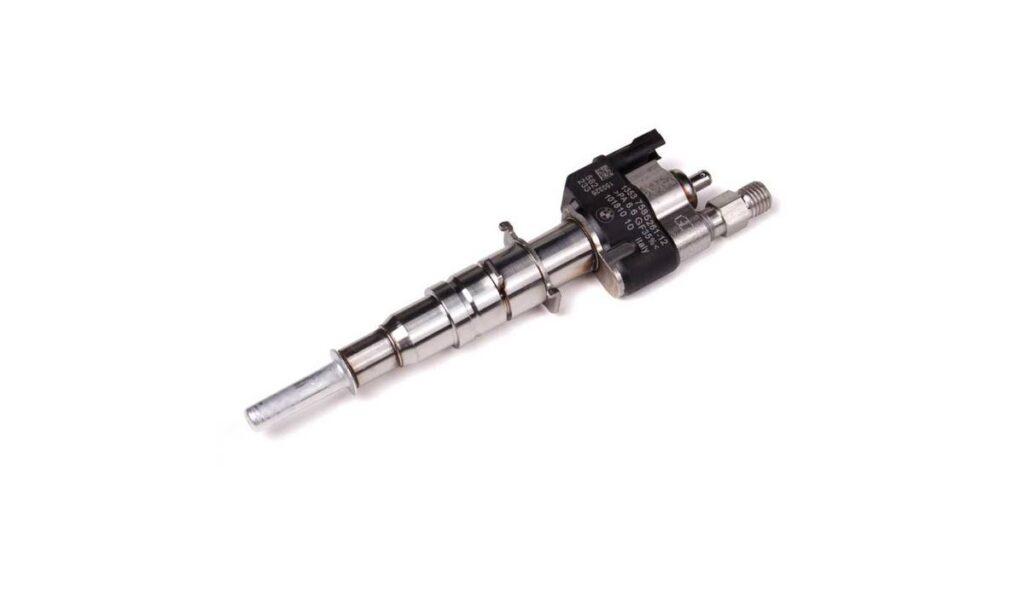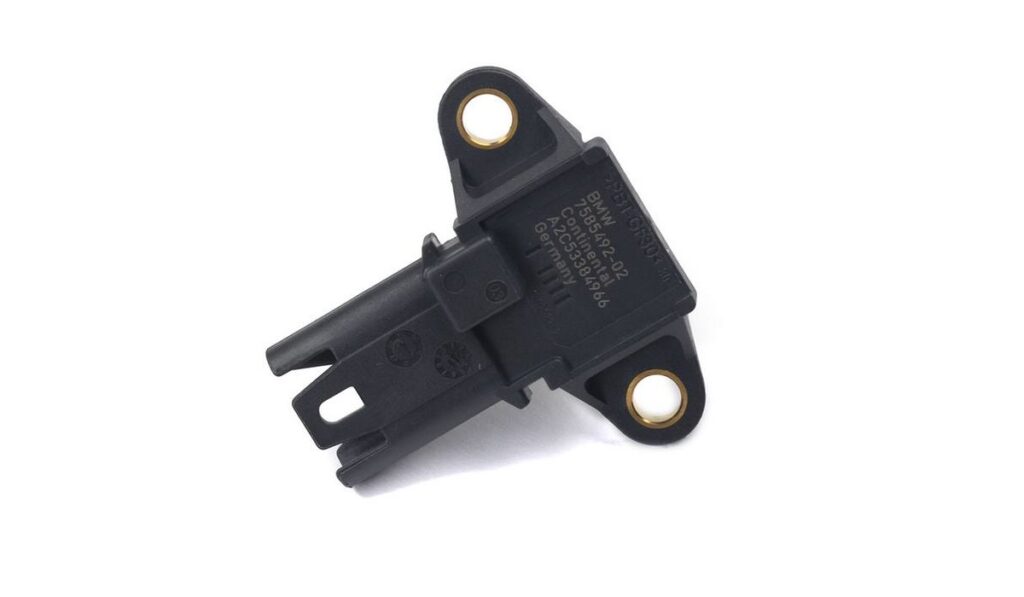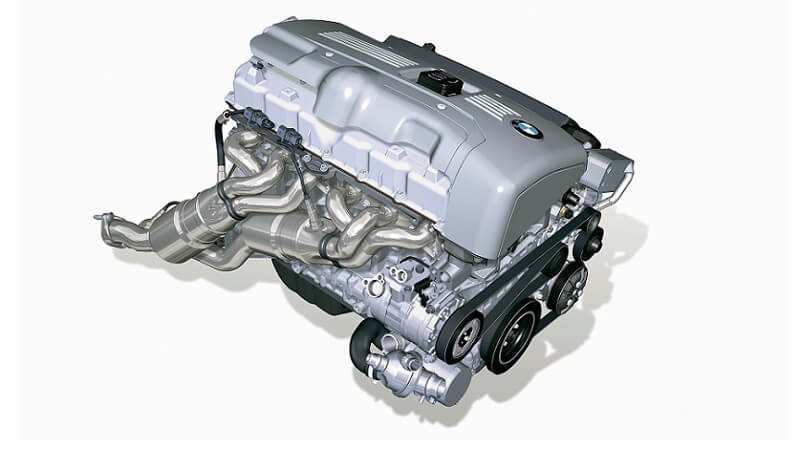As our vehicles become smarter and more sophisticated, so do the methods we use to diagnose and rectify issues that may arise. One of the most crucial aspects of this diagnostic process is understanding engine trouble codes, which serve as the car’s digital language to communicate problems to us.
In this particular guide, we will discuss the 29E1 BMW code. This code has puzzled many BMW owners over the years due to being somewhat difficult to diagnose. Hopefully, this guide will help you narrow down the diagnostic process and find what’s causing your Bimmer’s check engine light to stay on!
Understanding the 29E1 BMW Code
The 29E1 BMW code indicates a “Fuel mixture control 2” error. In other words, your engine is having trouble with creating the optimal air/fuel mixture. Unfortunately, the code doesn’t explain what exactly is causing the fuel mixture issue. It’s also worth mentioning that the 29E1 code is similar to the 29E0 code as the former is triggered when fuel mixture issues are detected on bank 2, while the latter is triggered when bank 1 is having this same problem. In many cases, you’ll find both of these codes logged by your ECU/DME.
The silver lining here is that these codes are caused by either fuel delivery or air delivery systems in most cases. We will go through the entire list of causes, but our focus will be on fuel injectors. This is due to the fact that faulty fuel injectors have proven to be the main culprit in numerous cases related to the N54 and N55 engines that are still among the most commonly found in BMWs across the United States.
Common Causes of the 29E1 BMW Code
The 29E1 BMW code, like many other engine trouble codes, can be triggered by a variety of factors. These factors range from minor glitches to more significant underlying issues within the vehicle’s systems. While the code itself does not provide an exhaustive explanation of the problem, it does serve as a starting point for diagnosis.
Let’s explore some common causes that could lead to the appearance of the 29E1 code:
- Air Intake Issues — Problems within the air intake system, such as leaks or restrictions, can disrupt the air-fuel mixture, affecting engine performance and triggering the 29E1 code.
- Defective PCV System — A defective PCV can cause issues with the fuel mixture, although it’s not a common occurrence.
- Fuel System Problems — A malfunctioning fuel system can impact fuel delivery and combustion efficiency, which may manifest as the 29E1 code. Issues like a clogged fuel filter or a failing fuel pump can contribute to this problem.
- Ignition System Malfunctions — Faulty spark plugs, ignition coils, or related components can disrupt the combustion process, causing misfires and code activation.
- Sensor Failures — Modern vehicles rely on various sensors to monitor engine parameters. The main culprits here are the O2 sensors and the MAP sensor.
- Faulty Fuel Injectors — Here, we begin to delve into the heart of our discussion. Faulty or malfunctioning fuel injectors can significantly impact engine performance and trigger the 29E1 code. Let’s explore this particular cause in more detail in the upcoming sections.
While this list provides an overview of potential triggers for the 29E1 code, it’s important to note that a comprehensive diagnosis involves thorough testing and analysis. Each potential cause requires specific diagnostic procedures to pinpoint the exact issue. In the next section, we will take a closer look at faulty fuel injectors and their connection to the 29E1 code, shedding light on how these critical components can affect your BMW’s engine performance.
Faulty Fuel Injectors and the 29E1 Code
Fuel injectors play a pivotal role in the modern engine’s performance and efficiency. These small yet powerful components are responsible for delivering precise amounts of fuel into the combustion chambers, where it combines with air to generate the controlled explosions that power your vehicle. When fuel injectors malfunction, a cascade of issues can ensue, and one such consequence is the activation of the 29E1 BMW code.
Understanding the Function of Fuel Injectors
Fuel injectors operate on a sophisticated principle, where they spray fuel in a fine mist under high pressure. This atomization ensures efficient combustion and optimal power output. The engine control module (ECM) or digital motor electronics (DME) precisely controls the opening and closing of fuel injectors based on various sensor inputs, such as throttle position, airflow, and engine temperature.
Impact of Faulty Fuel Injectors
When fuel injectors fail to perform their duties correctly, a domino effect of problems can occur. Here’s how faulty fuel injectors can trigger the 29E1 code:
- Rich or Lean Mixture — Faulty injectors can lead to an imbalanced air-fuel mixture. If the injectors deliver too much fuel, the mixture becomes “rich,” leading to incomplete combustion and excessive emissions. On the other hand, if they deliver too little fuel, the mixture becomes “lean,” resulting in poor performance and potential damage to the engine.
- Misfires — Inconsistent fuel delivery from faulty injectors can cause cylinder misfires, where the fuel fails to ignite at the right time. This leads to a rough idle, decreased power, and increased exhaust emissions.
- Leaking Seals — Fuel injector seals are a common reason why your BMW engine is throwing the 29E1 code. This is most common with GDI BMW engines where fuel pressures coming from the High Pressure Fuel Pump are extremely high. The injector itself doesn’t have to fail, but as long as you have a bad injector seal, the fuel will go around the injector and still enter the combustion chamber. At that point you’ll be running rich and the DME/ECU won’t be any wiser as to why there is more fuel in the system than it injected.
- Poor Fuel Atomization — Malfunctioning injectors may not atomize fuel properly, leading to larger fuel droplets. These droplets can fail to burn completely, contributing to carbon buildup and decreased engine efficiency.
- Increased Fuel Consumption — Inefficient combustion caused by faulty injectors can result in increased fuel consumption, as the engine compensates for the lack of power by demanding more fuel.
- Activation of the 29E1 Code — The ECM detects abnormal engine behavior caused by faulty fuel injectors and triggers the 29E1 code, indicating a fuel mixture issue.
Diagnosing and Addressing Faulty Fuel Injectors
In the upcoming sections, we will delve deeper into the symptoms of faulty fuel injectors, the steps to diagnose and fix the 29E1 code, and strategies to prevent such issues in the first place. By understanding the critical role of fuel injectors and their connection to the 29E1 code, you can take informed steps to ensure your BMW’s engine runs smoothly and efficiently.
Symptoms of Faulty Fuel Injectors
Detecting potential issues with your vehicle’s fuel injectors is crucial for maintaining optimal engine performance and preventing the activation of the 29E1 BMW code. Faulty fuel injectors can manifest through a range of symptoms, some of which might be subtle at first but can escalate if left unaddressed. Here are some common signs that indicate malfunctioning fuel injectors:
- Rough Idling — A noticeable rough or uneven idle, where the engine shakes or sputters when the vehicle is stationary, can be a sign of faulty fuel injectors disrupting the combustion process.
- Poor Acceleration and Power Loss — If your BMW struggles to accelerate smoothly or experiences a noticeable loss of power during acceleration, it could be due to inconsistent fuel delivery from malfunctioning injectors.
- Increased Fuel Consumption — A sudden decrease in fuel efficiency, coupled with frequent trips to the gas station, could be a result of inefficient fuel atomization caused by faulty injectors.
- Engine Misfires — Misfires occur when the fuel fails to ignite properly in one or more cylinders. This can lead to jerking or hesitation while driving and might trigger the check engine light, indicating the 29E1 code.
- Excessive Exhaust Emissions — Faulty fuel injectors can lead to incomplete combustion, causing higher levels of unburned fuel to be expelled through the exhaust. This can result in an increase in emissions and the potential activation of emission-related warning lights.
- Strange Odors and Smoke — A strong smell of unburned fuel, often described as a “gassy” odor, or visible black smoke from the exhaust could indicate injector issues and incomplete combustion.
- Engine Stalling — In severe cases, malfunctioning injectors can lead to engine stalls or shutdowns, causing potential safety hazards while driving.
- Check Engine Light (CEL) — The most direct indication of a problem, the activation of the check engine light, may accompany any of the above symptoms. When the ECM detects abnormal fuel injector behavior, it can trigger the 29E1 code.
Recognizing these symptoms and addressing them promptly can help prevent further damage to your BMW’s engine and other components.
Diagnosing and Fixing the 29E1 Code Due to Faulty Fuel Injectors
Diagnosing the 29E1 code attributed to faulty fuel injectors requires a systematic approach and the right tools. While the symptoms mentioned earlier can provide valuable clues, a comprehensive diagnosis is essential to pinpoint the root cause and develop an effective solution. Here’s a step-by-step guide to diagnosing and addressing the 29E1 code:
- Scan for Codes — Use an OBD-II scanner to retrieve the specific trouble code, which in this case is the 29E1 code. This code provides a starting point for diagnosis and indicates a fuel mixture issue.
- Visual Inspection — Conduct a thorough visual inspection of the fuel injector wiring, connectors, and hoses. Look for any signs of damage, leaks, or loose connections that could affect injector performance.
- Fuel Pressure Test — Check the fuel pressure using a fuel pressure gauge. A deviation from the recommended pressure levels might indicate a problem with the fuel delivery system, including the injectors.
- Electrical Testing — Test the electrical signals sent to the injectors by using a multimeter. Incorrect voltage or irregular signals can point to wiring or control module issues.
- Fuel Injector Cleaning — In some cases, clogged or dirty injectors can cause performance issues. Consider professional fuel injector cleaning to restore proper fuel atomization and flow.
- Replace Faulty Injectors — If tests confirm that one or more injectors are faulty, replacement is necessary. Choose high-quality, OEM or recommended aftermarket injectors to ensure optimal performance.
- Code Reset — After replacing or cleaning injectors, perform an ECU/DME reset to clear the trouble code and allow the system to relearn the new injector behavior.
- Test Drive and Recheck — Take your BMW for a test drive to ensure that the symptoms have been resolved. Use the scanner to check for any remaining trouble codes and to ensure that the 29E1 code no longer appears.
- Regular Maintenance — To prevent future injector-related issues, adhere to a regular maintenance schedule. Use high-quality fuel, consider periodic fuel system cleaning, and address any issues promptly.
By following these steps and seeking professional help if needed, you can diagnose and address the 29E1 code caused by faulty fuel injectors. Keep in mind that addressing this issue quickly not only restores your BMW’s performance but also contributes to its longevity and efficiency.
How a Bad MAP Sensor Can Cause the 29E1 Code
In the intricate network of sensors and components that make up a modern vehicle’s engine management system, the MAP (Manifold Absolute Pressure) sensor holds a critical role. This sensor measures the pressure within the engine’s intake manifold, providing essential data to the engine control module (ECM) for calculating the correct air-fuel mixture. Many BMW engines rely solely on the MAP sensor to gain data on air intake values. While the 29E1 code is commonly associated with faulty fuel injectors, a malfunctioning MAP sensor can also play a significant role in triggering this diagnostic trouble code.
Understanding the Role of the MAP Sensor
The MAP sensor’s function is to monitor the changes in intake manifold pressure as the engine operates. It helps the ECM determine the engine load, which is a crucial factor in calculating the appropriate fuel injection timing and quantity. A properly functioning MAP sensor ensures that the engine receives the right amount of fuel, optimizing combustion and performance.
Effects of a Bad MAP Sensor on Fuel Mixture
When the MAP sensor starts to malfunction or provides inaccurate readings, it can disrupt the delicate balance of the air-fuel mixture, potentially leading to the activation of the 29E1 code. Here’s how a bad MAP sensor can contribute to this issue:
- Incorrect Load Calculation — A faulty MAP sensor may not accurately measure the engine’s load, leading to incorrect calculations by the ECM. This can result in an improper air-fuel mixture, causing the engine to run either too rich (excess fuel) or too lean (insufficient fuel).
- Fuel Injection Timing — The ECM relies on the MAP sensor’s input to determine when to inject fuel into the cylinders. If the sensor provides faulty readings, it can lead to incorrect fuel injection timing, affecting combustion efficiency and potentially triggering the 29E1 code.
- Combustion Imbalance — An inaccurate air-fuel mixture caused by a bad MAP sensor can lead to incomplete combustion, resulting in misfires, rough idling, and poor engine performance—symptoms that align with those associated with the 29E1 code.
Diagnosing and Addressing MAP Sensor-Related Issues
Diagnosing a bad MAP sensor involves specialized diagnostic tools and procedures. Here’s how a professional mechanic might approach the diagnosis:
- Scan for Codes — Begin by using an OBD-II scanner to retrieve the specific trouble codes, including the 29E1 code. This step provides valuable information about the nature of the problem.
- Inspect MAP Sensor — Physically inspect the MAP sensor, its wiring, and connections for visible damage, corrosion, or loose connections.
- Testing Voltage — Use a multimeter to test the voltage output of the MAP sensor. Deviations from the expected voltage range can indicate a malfunctioning sensor.
If a faulty MAP sensor is identified as the cause of the 29E1 code, the sensor should be replaced with a high-quality, compatible replacement part. After the replacement, the ECU/DME may need to be reset to clear the trouble code and recalibrate the system.
Fix the 29E1 BMW Code with Bimmers.com!
The 29E1 BMW code, a small sequence of characters on your vehicle’s dashboard, holds a wealth of information about your engine’s health. Understanding the significance of this code, particularly its connection to faulty fuel injectors, allows you to take a proactive approach to maintenance and repairs.
Speaking of which, the best way to keep the 29E1 code from coming back is to use quality BMW parts! Here at Bimmers.com, we stock a wide range of fuel injectors, MAP sensors, and everything else you might need to fix this code. Check out our catalog and find parts that are a guaranteed fit for your BMW!







